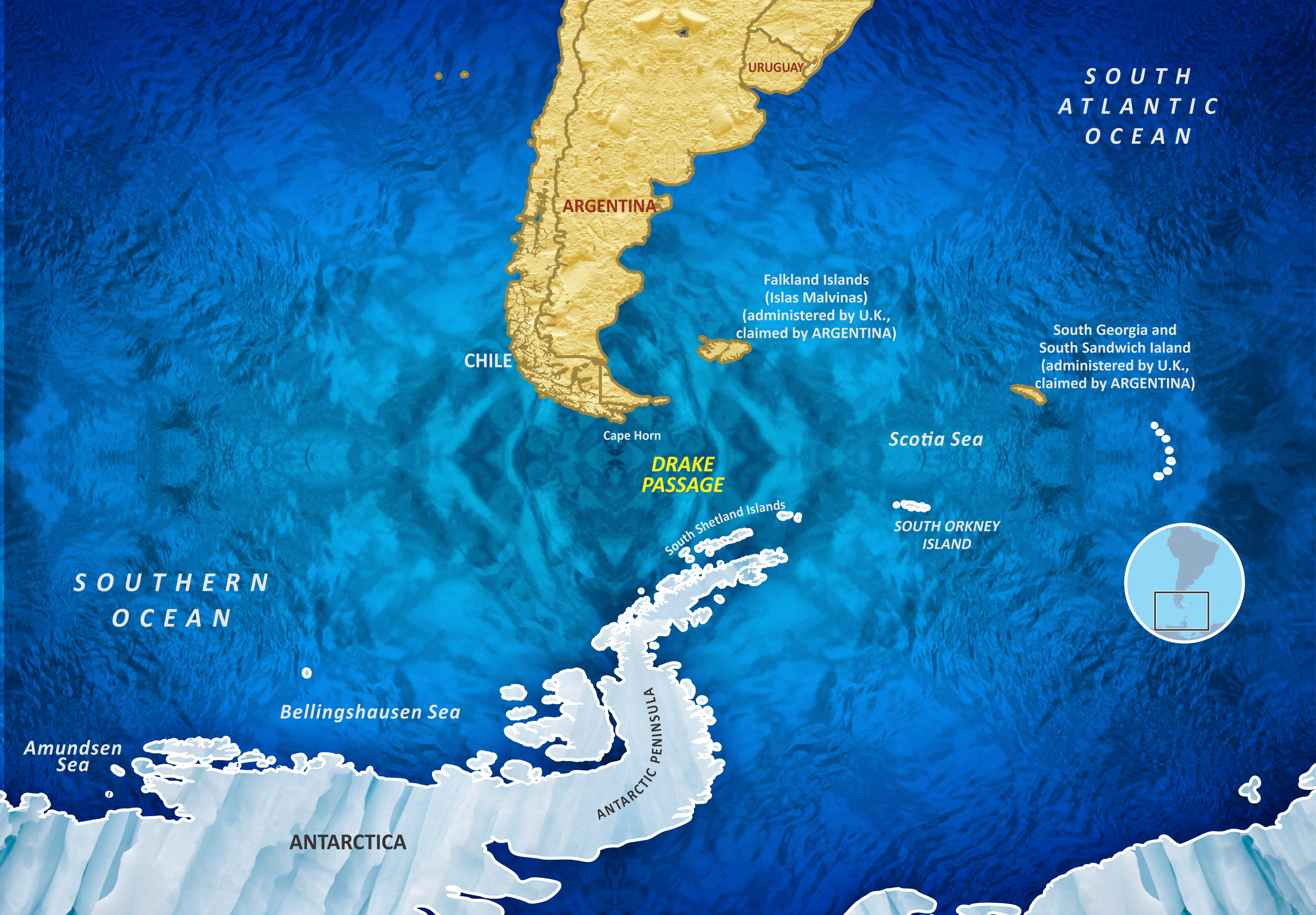Few water crossings instill more fear than the Drake Passage, the notorious body of water between South America’s Cape Horn and the South Shetland Islands of Antarctica. Its vigorous currents, freezing waters, ferocious winds, and enormous waves have endowed the passage with a reputation for being among the most treacherous in the world.
What is the Drake Passage?
Measuring roughly 800 kilometers wide (500 miles) and 1,000 kilometers (600 miles) long, the Drake Passage is the shortest distance from the Antarctic continent to any other landmass. Its incredibly harsh waters are one of the reasons why humans didn’t set foot on Antarctica until the 19th century.
The passage is named after the 16th-century English explorer Sir Francis Drake, known for circumnavigating the world between 1577 and 1580. To complete this feat, he and his fleet passed through the Strait of Magellan, a passage through the rugged islands and icebergs on South America’s tip. Although Drake never sailed the passage himself, his expedition taught the English that there was open water south of South America, making a circumnavigation of the world possible by boat.
In Spanish, however, the passage is known as the Mar de Hoces, named after the Spanish navigator Francisco de Hoces, who came across the body of water In 1525 while sailing through the Strait of Magellan.
It wasn’t until 1616 when Willem Schouten from the Dutch East India Company led the first crew to sail around Cape Horn and through the Drake Passage.
A map showing the Drake Passage connecting the Atlantic and Pacific oceans under South America.
Image credit: shubhamtiwari/Shutterstock.com
Why is the Drake Passage so dangerous?
Some of the world’s strongest ocean currents flow through the Drake Passage because they don’t meet resistance from any landmass, allowing streams of water to “let rip” and generate a huge amount of force.
Likewise, strong winds are allowed to rush freely for thousands of kilometers without hitting land at this latitude, mustering intense storms and colossal waves. Some accounts of passing through the Drake Passage have reported waves of up to 25 meters (82 feet), about the height of an eight-story building.
What’s it like to sail across the Drake Passage?
On Christmas Day 2019, a gutsy crew of six explorers became the first people to ever row across the passage in a 13-day battle against the elements.
“It was quite harrowing. By the end, we all lost a good amount of weight and were delirious from the sleep deprivation,” Colin O’Brady, one of the six men on the boat, told the Associated Press after completing the journey.
Today, countless people have made the adventurous journey across the Drake Passage, mainly while traveling to Antarctica. Large, modern ships make the journey considerably smoother than it was in centuries gone by – although, one piece of advice if you plan on making the trip: pack travel sickness tablets.
“Crossing the Drake Passage is the price of entry for going to the Antarctic. The peace and serenity of the Antarctic is matched by the turbulence and drama of the Drake. They are two sides of the same coin: you don’t get one without the other. The conditions of the Drake are somewhere between bad and terrifying, depending on the weather gods, but worth every moment,” Lyndon File, customer experience manager at G Adventures, a tour company that offers tours to Antarctica, said in a blog post about crossing the passage.
“I felt like a wet dirty sock in the washing machine on a 36-hour spin cycle. I’ve never been one to fall ill to motion sickness, but this journey home would be a true test of that,” added the company’s media manager Kyle Jordan.
Source Link: The Drake Passage: One Of The World's Most Treacherous Sea Crossings
